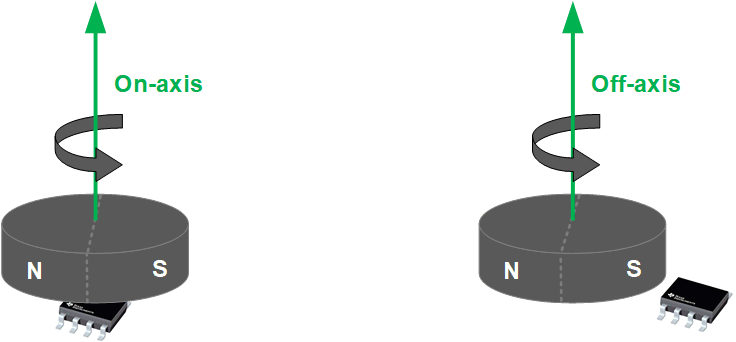SBASAF4 September 2021 TMAG5170
PRODUCTION DATA
- 1 Features
- 2 Applications
- 3 Description
- 4 Revision History
- 5 Pin Configuration and Functions
- 6 Specifications
-
7 Detailed Description
- 7.1 Overview
- 7.2 Functional Block Diagram
- 7.3
Feature Description
- 7.3.1 Magnetic Flux Direction
- 7.3.2 Sensor Location
- 7.3.3 Magnetic Range Selection
- 7.3.4 Update Rate Settings
- 7.3.5 ALERT Function
- 7.3.6 Threshold Count
- 7.3.7
Diagnostics
- 7.3.7.1 Memory CRC Check
- 7.3.7.2 ALERT Integrity Check
- 7.3.7.3 VCC Check
- 7.3.7.4 Internal LDO Under Voltage Check
- 7.3.7.5 Digital Core Power-on Reset Check
- 7.3.7.6 SDO Output Check
- 7.3.7.7 Communication CRC Check
- 7.3.7.8 Oscillator Integrity Check
- 7.3.7.9 Magnetic Field Threshold Check
- 7.3.7.10 Temperature Alert Check
- 7.3.7.11 Analog Front-End (AFE) Check
- 7.3.7.12 Hall Resistance and Switch Matrix Check
- 7.3.7.13 Hall Offset Check
- 7.3.7.14 ADC Check
- 7.4 Device Functional Modes
- 7.5 Programming
- 7.6 Register Map
- 8 Application and Implementation
- 9 Power Supply Recommendations
- 10Layout
- 11Device and Documentation Support
- 12Mechanical, Packaging, and Orderable Information
Package Options
Mechanical Data (Package|Pins)
- DGK|8
Thermal pad, mechanical data (Package|Pins)
Orderable Information
8.2.1.1 Gain Adjustment for Angle Measurement
Common measurement topology include angular position measurements in on-axis or off-axis angular measurements shown in Figure 8-5. Select the on-axis measurement topology whenever possible, as this offers the best optimization of magnetic field and the device measurement ranges. The TMAG5170 offers an on-chip gain adjustment option to account for mechanical position misalignments.
 Figure 8-5 On-Axis vs. Off-Axis Angle Measurements
Figure 8-5 On-Axis vs. Off-Axis Angle Measurements